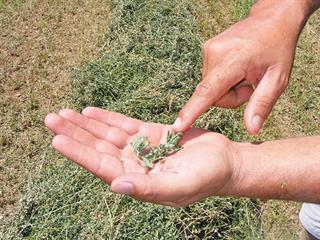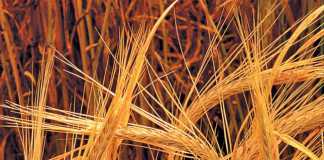
In South Africa, lucerne is generally planted from March to May to minimise competition from weeds. The two most common sowing techniques are a seed-bag and a fertiliser spreader. Lucerne seed is expensive, so avoid
wasting it by sowing too much of it at once. An optimal rate is 20kg seed/ha to 25kg seed/ha. After scattering the seed, cover it with soil using a roller or lucerne rake.
Although lucerne has a deep root system and is exceptionally drought-resistant, it nevertheless requires plenty of moisture for optimal production. Lucerne can be cultivated successfully with either flood or sprinkler irrigation at about 1 200mm of
water a year, including rainfall. Irrigation must be adapted to the climate and soil type.
Cutting – the old and the new
There are two main types of lucerne cutter – the traditional sickle bar mower and the disc mower, which uses rotating blades. The latter cuts fast and is highly effective. Remember not to remove re-growth from the crown. This will deplete the plant’s reserves, which in turn will reduce yield. Lands where cutting has been completed must be left for a day, or even longer, depending on the prevailing temperature and humidity, before the lucerne is raked into windrows to dry out before baling.
READ MORE: Lucerne for beginners – part 1
When is lucerne ready for baling?
When the lucerne is dry enough, you can begin baling. This requires great care, as the wrong baling techniques may lead to severe losses. Every effort must be made to retain the maximum amount of leaves. If lucerne is baled too dry, leaf loss is greater, reducing the nutritional value. If bales are too moist, the lucerne may rot. Stacking moist bales may also end up starting a fire.
The percentage of moisture at baling contributes substantially to the quality of the hay. Two simple tests can be applied:
- If the skin around the stem of the plant can be removed easily, it is ready for baling;
- If a wad of lucerne held in one hand can be twisted off easily with the other hand, it is ready for baling.
Dew helps to limit the loss of leaves, so start baling early in the morning.
Removal
When baling has been completed, remove the lucerne from the land as soon as possible. Growth takes place continuously, and new growth under bales that are left too long on the land soon turns yellow.
Source: Infopak by K Lategan, Elsenburg/Upington agricultural research station.













